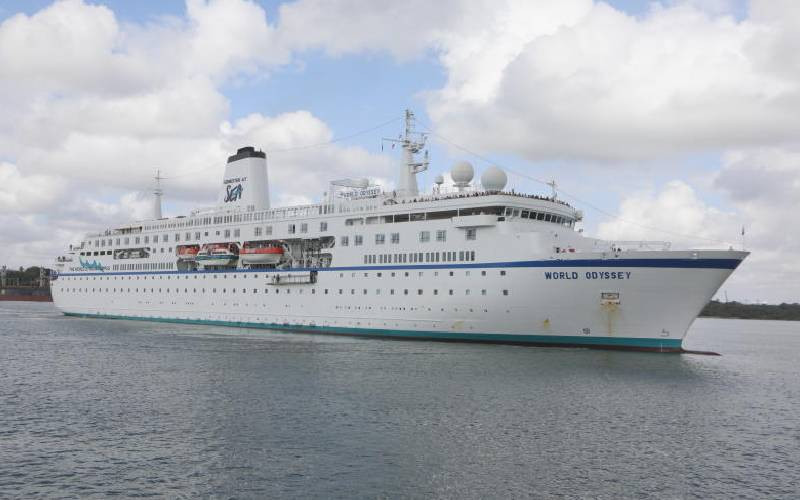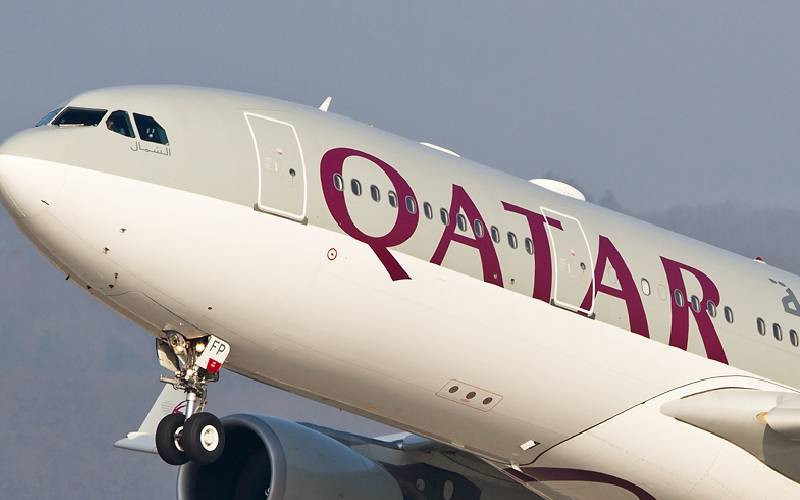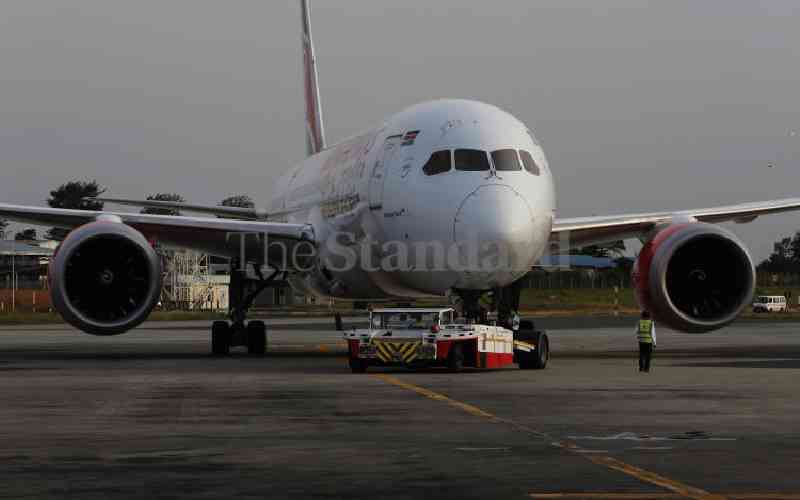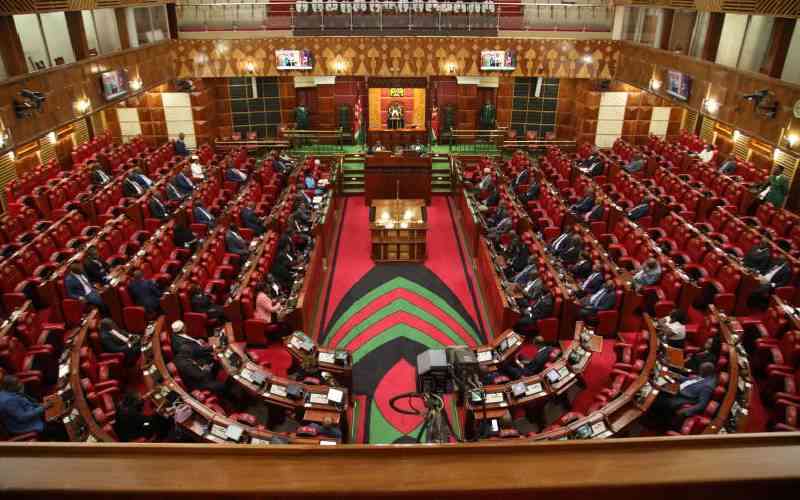
At the Mombasa Port berth number one lies a cruise terminal regarded as the best along the East African coastline.
The modern terminal allows the berthing of two Oasis-class ships (some of the world's largest passenger ships) to dock simultaneously but is yet to capture the cruise ships market mainly dominated by European and American destinations.
With the construction completed in 2021 at Sh1.4 billion, the terminal is feeling the effects of the Covid-19 pandemic, which has seen less than 10 world-class cruise ships dock.
Since 2021, the facility has not handled a sufficient number of cruise lines compared to Port Victoria, Seychelles, where there are over a dozen port calls by cruise ships that sail the waters within the Eastern rim of the Indian Ocean.
In 2022, vessels under the Oceania brand were the only ones that made round trips to Mombasa.
This year has seen three cruise ships call at the facility including Ms Odyssey of the Sea (a floating university) which called for a record five days, MV Artania and MS Bollete.
For instance, sailing under the flag of the Bahamas, MS Odyssey opened the doors of the cruise terminal at the port of Mombasa, which had been lying unused for more than two years.
In bringing life to the terminal, the cruise ship also known as a floating university operating as a campus and travelling home, docked carrying 800 passengers.
Last Christmas, MS Nautica, flying the Marshall Island flag, docked at the Port of Mombasa with 1,000 passengers and crew for a day-long Port visit.
Kenya Ports Authority (KPA) principal communication officer Haji Masemo said the devastating Covid-19 pandemic dealt cruise operations a severe blow.
"We are still not yet there, but already there are efforts to revive cruise tourism fully within the Cruise Indian Ocean Region, where Kenya is a member," said Mr Masemo.
Logos Hope (the world's largest floating book fair) is expected to sail into Port of Mombasa on August 21 for a record 45-day port stay.
Masemo said it is worth noting that the world's largest family-owned cruise liner MSC Cruises, which has been employing many young Kenyan seafarers to work onboard its fleet of ocean-going cruise liners, will be making its maiden port call in 2024 using MSC Poesia, which will be on a global tour.
Initially, all cruise vessels calling at the Port of Mombasa would be assigned Berth 1 or the Mbaraki Wharf next to the Likoni Ferry Crossing channel.
And to attract more cruise liners to start calling at the Mombasa Port, the government decided to upgrade the one built more than five decades ago to a modern facility.
With a new state-of-the-art and modern terminal complete with all the amenities to handle arriving cruise vessels and their passengers, there were hopes that Mombasa would fully reap the benefits of the cruise ship industry.
The gloomy market has forced local shipping and tourism stakeholders to call on a more sober approach to cruise ship marketing and the need to put up a fully-fledged department to market cruise tourism.
The Kenya Association of Hotelkeepers and Caterers (KAHC) Coast branch executive officer Sam Ikwaye said Kenya still lacks a direct strategy to fully utilise the potential in cruise tourism.
"Competition remains high in the East African Indian Ocean region, with the island nations of Seychelles, Mauritius and Le Reunion standing tall to attract cruise liners. Generally, our policies and lack of a synchronised strategy between Kenya Ports Authority (KPA), the county government of Mombasa and the Tourism ministry are factors affecting optimal utilisation of this attraction," he said.
Mr Ikwaye pointed out that the country's top tourism marketer, Kenya Tourism Board (KTB), has also not been strong in marketing cruise tourism.
He said the cruise terminal is a jewel that KPA is not keen to support, opening it up to more private sector players.
Ikwaye said there is a need for authorities handling the cruise sector to partner with international cruise shipping lines, get endorsements and organise familiarisation trips on the products available to cruise liners.
"We need to have a cruise ship or MSC homeported here. This is where the private sector is encouraged to invest in water transport and attractions. The county government of Mombasa can also spearhead this as a county attraction," he said.
Ikwaye added that while there is a need for KTB to have a dedicated department for cruise tourism, it is more practical for the marketing agency to reach out to significant players globally or employ a professional to grow this segment of the neglected industry.
Mr Ishpal Oberoi from the Kenya Association of Tour Operators (KATO) said there is a need to have more international flights land at the Moi International Airport, alongside a rebounding cruise tourism industry.
While targetting more cruise lines to Mombasa, he said this would go a long way in boosting the local economy, money for most cruise port calls lies in securing homeport agreements with major cruise lines worldwide.
The Mombasa Port Cruise Terminal consists of a three-storey building with duty-free shops, lounges, restaurants, conference facilities, customs and passport control facilities. As Kenya tithers how to navigate its full cruise ship tourism potential, the global forecast for cruise passengers is expected to reach 106 per cent of 2019 levels in 2023, with 31.5 million passengers sailing the world's oceans.
This compares to the United Nations World Tourism Organisation forecast (January 2023) that international tourist arrivals in 2023 will be 80 per cent to 95 per cent of 2019 levels.
It is predicted that 85 per cent of travellers who have cruised will cruise again which is 6 per cent higher than the pre-pandemic period.
Collaborative, sustainable tourism initiatives led by the cruise industry, destinations, ports, community organisations, and stakeholders are helping to achieve mutual objectives to preserve the integrity, cultural heritage, and beauty of the world's most treasured destinations for future generations.
Younger generations are the future of cruising with 88 per cent of millennials and 86 per cent of Gen-X travellers who have cruised before saying they plan to sail again.
Cruise lines offer shorter and longer cruise itineraries to attract more first-time cruisers and meet the needs of repeat cruisers.
Solo cruise travel is on the rise. Cruise lines are responding by increasing the number of single cabins in new ships and retrofitting some existing vessels to include additional cabins designed for those travelling alone.
There is an acceleration of environmental technologies and practices on cruise ships as the industry pursues net-zero carbon cruising by 2050.
 The Standard Group Plc is a multi-media organization with investments in media platforms spanning newspaper print
operations, television, radio broadcasting, digital and online services. The Standard Group is recognized as a
leading multi-media house in Kenya with a key influence in matters of national and international interest.
The Standard Group Plc is a multi-media organization with investments in media platforms spanning newspaper print
operations, television, radio broadcasting, digital and online services. The Standard Group is recognized as a
leading multi-media house in Kenya with a key influence in matters of national and international interest.











